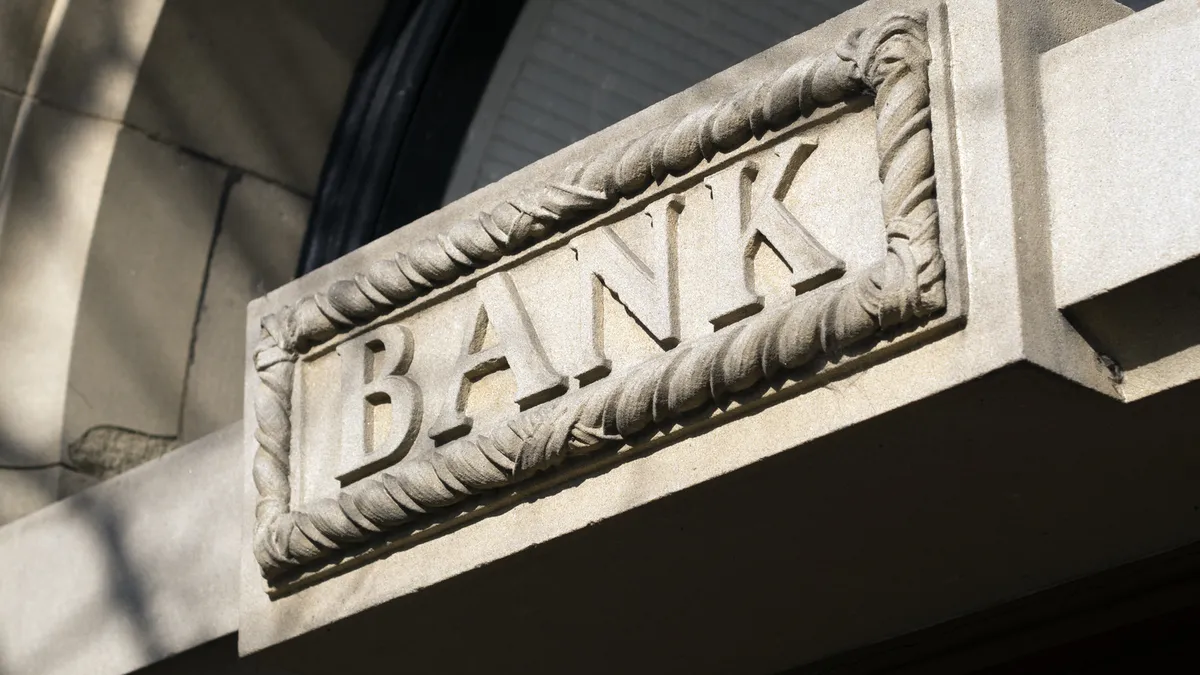Dive Brief:
- Bank branches could be extinct by 2034 if current footprint reduction trends continue, according to a study commissioned by Self Financial, a fintech aimed at an underbanked population with thin or flawed credit.
- The study, released last week, measures branch numbers between 2000 and 2018 and hinges on the acceleration of closures in the last six of those years. Particularly, the rate of closure doubled from 0.81% per year between 2012 and 2015 to 1.6% between 2015 and 2018.
- Notably, data from 2019 and 2020 is not included in the study. And to that point, the numbers vary. Banks closed 3,164 branches but opened 1,500 others in fiscal 2019 for a net loss of 1,664, according to a report by commercial real estate company JLL. Net branch closures in 2020 increased to 2,284, The Financial Brand reported, citing S&P Global data. That number trends upward — to 2,677 over the past 12 months — in S&P Global's most recent snapshot, released Tuesday.
Dive Insight:
The number of active branches varies from source to source, too. S&P Global put its figure Tuesday at 83,443 as of Feb. 28. By contrast, the National Community Reinvestment Coalition put the end-2020 figure at 81,586. According to Self's numbers, the U.S. had 83,060 branches in 2012 but 77,647 in 2018 — a net loss of 5,413 branches, or 6.5%.
Given JLL and S&P Global's data for 2019 and 2020, Self's estimate of a three-year trend of closures would hold if 2,000 branches are lost in 2021.
By 2027, there could be fewer than 40,000 branches in the U.S., according to Self's predictions, and fewer than 16,000 could remain by 2030.
Self's data breaks the trend down from state to state. Forty states have seen declines in the number of branches between 2012 and 2018 — led, in number, by Florida, which lost 529 branches over six years. Maryland shed the greatest percentage of its branches in that time, 12.62%.
Along with the research, Self surveyed more than 1,100 consumers in July and August, measuring their concerns on what needs to change with the current banking system. About 46% said they think the banking system writ large needs to change. About 70% of respondents said they trust banks with a physical presence, compared with 47% who said they distrust online-only banking institutions.
Easier access to cash (53.7%) and in-person advice (50.4%) were the top reasons respondents gave for preferring branches. On that, banks that are reducing their brick-and-mortar footprint are in sync with the public. PNC, for example — which said it intends to close 120 branches in 2021 — is testing a "solutions center" model in markets such as Kansas City, where it has a lesser presence. Customers there can still contact bank employees and access ATMs, mobile workstations and banking kiosks.
Self's study doesn't explicitly mention the coronavirus crisis as an accelerator for branch closures. KeyBank and U.S. Bank have both embraced a quicker reduction in branches.
The survey also took comment from bank leaders — both traditional and challenger.
"We believe we have the model of the future — a light branch footprint, seamless digital capabilities and a network of partners that expand our reach to hundreds of millions of customers," Citi CEO Jane Fraser said in the study.
Eric Taylor, director of user experience at Varo, predicted brick-and-mortar branches wouldn't exist "in their current format."
An spokesperson for Germany-based neobank N26 clarified. "Personalization will become more important, and [artificial intelligence] will make it possible to offer banking products tailored to individual needs, at better prices," the spokesperson said.














